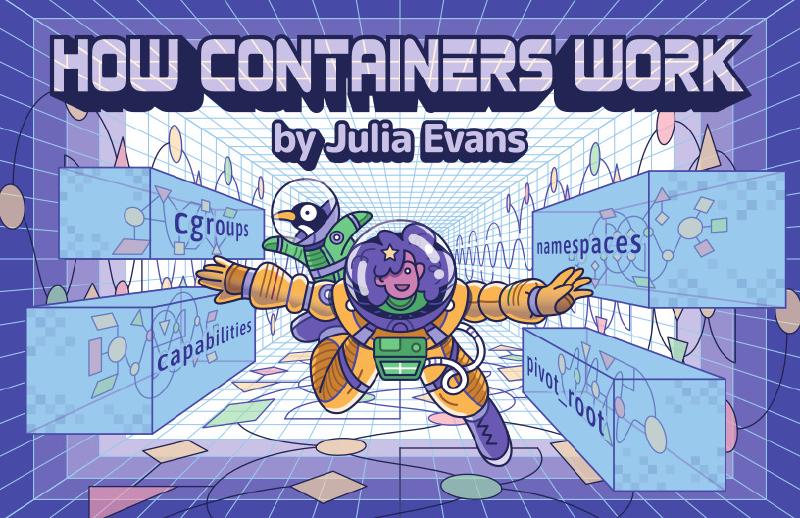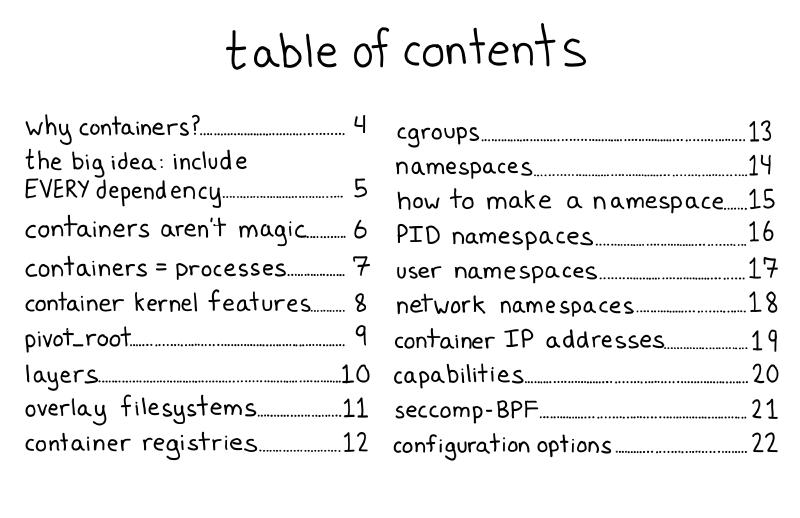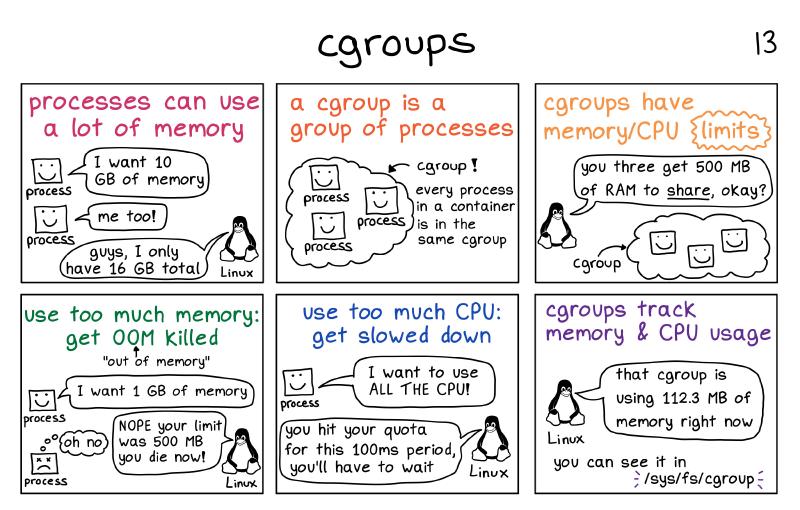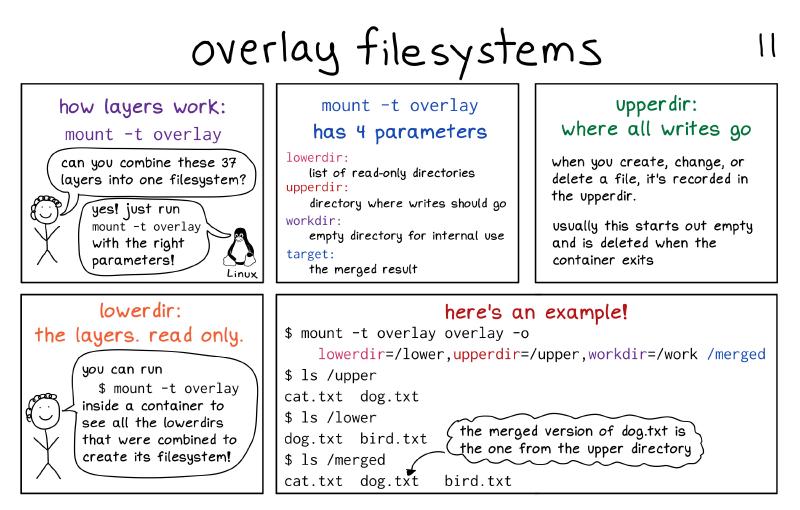
How Containers Work!
When you first start using containers, they seem really weird. Is it a process? A virtual machine? What’s a container image? Why isn’t the networking working? I’m on a Mac but it’s somehow running Linux sort of? And now it’s written a million files to my home directory as root? What’s HAPPENING?
And you’re not wrong. Containers seem weird because they ARE really weird. They’re not just one thing, they’re what you get when you glue together 6 different features that were mostly designed to work together but have a bunch of confusing edge cases.
This zine explains EXACTLY what happens when you run a container on your computer. It turns out that there are only a few big ideas you need to understand what’s going on (images! overlay filesystems! capabilities! pivot_root! cgroups! namespaces! seccomp-bpf!).
Once you understand these fundamentals, you’ll be able to go from “um, my container got killed??? why??? help!!!” to “oh, we set the cgroup memory limit too low! I’ll just look up how to adjust it!”
I want this!
PDF just for me!
print + PDF
We have different pricing options based on usage:
< 30 copies
30-100 copies
100+ copies
PDF just for me!
print + PDF
We have different pricing options based on usage:
< 30 copies
30-100 copies
100+ copies
Credits!
- Cover art by Vladimir Kašiković
- Editing by Dolly Lanuza and Kamal Marhubi
- Copy editing by Courtney Johnson
Commonly asked questions:
what's a zine?
According to Wikipedia:
A fanzine (blend of fan and magazine or -zine) is a non-professional and non-official publication produced by enthusiasts of a particular cultural phenomenon (such as a literary or musical genre) for the pleasure of others who share their interest.
The zines on this site are usually about 20 pages, and they’re full of short, informative, and fun comics which will quickly teach you something useful.
who are these zines for?
They’re aimed at working programmers, like me! The idea is that you’re busy, you want to know how to use some computer thing, and the man page makes your head hurt.
is the PDF version printable?
Yes! The PDF version of the zine includes special PDFs designed to be easy printable on a home printer. Print it out, staple it, fold it, read it, and then give it to a friend! It turns out it’s way easier to convince your friends to read a physical thing that is in front of them.
They all have black & white version to make sure they print well if you only have a black & white printer.


